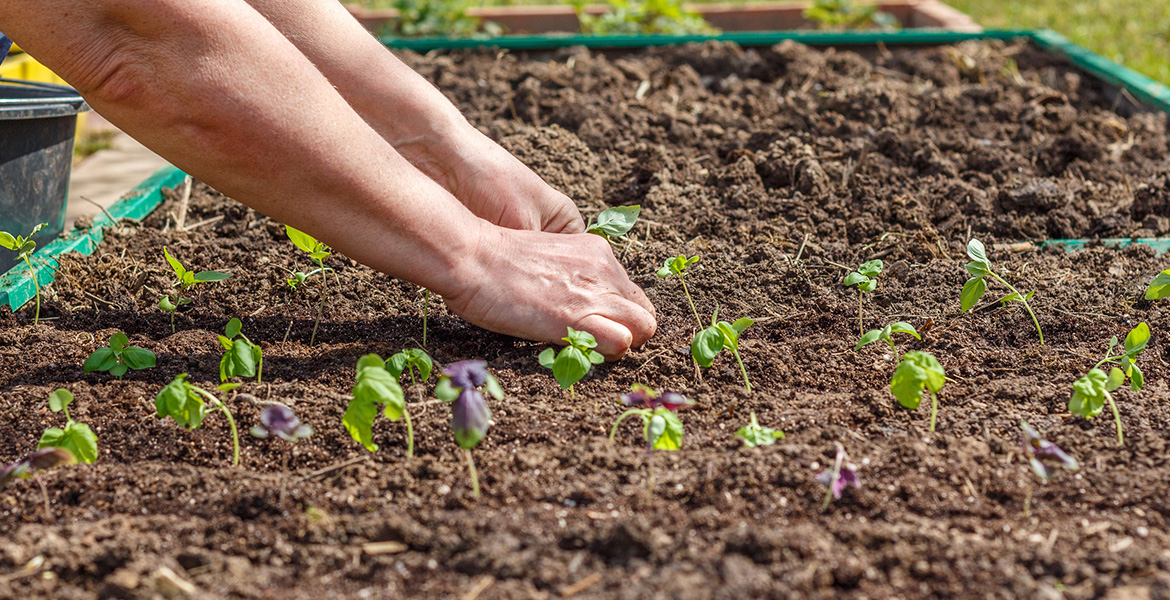
It is time to start making spring garden preparations
Tuesday, April 17, 2018
With spring-like temperatures finally on the horizon, Oklahoma gardeners are anxious to start prepping for spring vegetable gardening season.
David Hillock, Oklahoma State University Cooperative Extension consumer horticulturist, said a well-planned and properly managed home garden can supply a family all season with fresh vegetables that are full of flavor and a healthy addition to the menu.
“In order for your garden to be successful, it’s vital to prepare the planting site. Choose an area with a lot of sun exposure, well-drained soil and protection from these wild Oklahoma winds,” he said. “If your landscape doesn’t drain well, you might want to consider putting in raised beds to help with that issue.”
Everyone knows how dry the summer months can be, so it is important to locate the garden near a water source. Try to keep the site away from trees and shrubs that not only will compete for water, but also for ground nutrients.
Good soil is a must for successful gardening. Hillock suggests having the soil tested every three to four years. Gardeners can easily enhance their soil with organic materials, such as compost, whenever possible.
Other tips gardeners may find helpful include applying fertilizers in the recommended manner and amount; using mulch to not only helps conserve water, but also to control weeds and reduce fruit rots; keeping the garden free of weeds, insects and diseases; and rotating specific crop family locations each year to help avoid insect and disease buildup.
“Get to know your soil. If it’s sandy, incorporate organic matter to help reduce rapid drying. It also helps improve nutrient availability,” he said. “Not only that, organic matter will help improve soil aeration and drainage in heavy clay soils.”
Another important factor of gardening is making sure you have soil that will readily absorb water and not form a crust when it dries out. Good drainage is a must, so the plants do not become waterlogged.
“Porous soil contains more air, which is necessary for healthy root growth,” Hillock said. “As the organic matter decomposes, the soil texture improves and nutrient availability should increase.”
Many cool-season crops should go in the ground now, but be sure to keep an eye on the long-range forecast for a cold snap. Good choices for cool-season crops include broccoli, beets, cabbage, carrots, kohlrabi, leaf and head lettuce, onions, green peas, potatoes, radishes, rhubarb, spinach and turnips.
“Remember, the soil temperature at planting depth should be at least 40 degrees Fahrenheit, so parts of southern and southeastern Oklahoma may be able to get seeds in the ground as much as two weeks ahead of the northwest and Panhandle areas,” he said. “Oklahoma weather certainly can make gardening a challenge.”
For the best gardening results, make sure to read the directions on seed packets regarding spacing between each plant, as well as spacing between each row. Gardeners must make sure the seeds are planted at the proper depth to ensure productivity. Additional fertilizers may be beneficial to stimulate growth and production.
“Keep in mind the weather always plays a key role in planting times, but it’s a good idea to get your cool season crops in the ground soon,” Hillock said. “Start thinking ahead because it won’t be long until those warm-season crops will need to go in the ground.”
Story by Trisha Gedon
